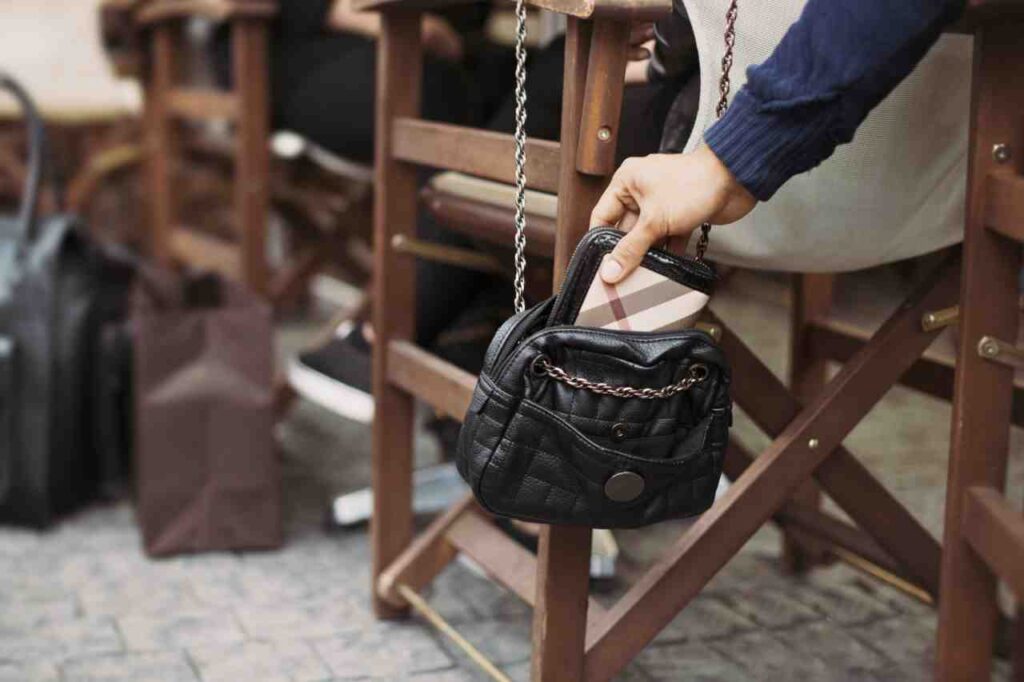Traveling can be an exciting adventure, but it also comes with its share of risks. One such risk is the potential for personal belongings to be stolen while you’re away from home. You might think that your home insurance policy only covers incidents that occur within your home. However, you may be surprised to learn that your home insurance policy could also provide coverage for personal items stolen while traveling. This article will delve into the specifics of home insurance coverage for stolen items during travel, helping you understand the extent of your protection and how to ensure you’re adequately covered. Let’s explore this often overlooked aspect of home insurance together.
What is Home Insurance?

Home insurance, also known as homeowners insurance, is a form of property insurance that covers losses and damages to an individual’s house and assets in the home. It also provides liability coverage against accidents in the home or on the property.
There are several types of home insurance policies, each offering different levels of coverage. Here are some of the most common ones:
- HO-1 (Basic Form): This is the most basic type of home insurance policy. It covers your home and personal property against threats like fire, lightning, windstorms, hail, explosions, and theft.
- HO-2 (Broad Form): This policy covers everything in HO-1, plus additional perils like falling objects, weight of ice, snow, or sleet, freezing of household systems, and accidental discharge or overflow of water or steam.
- HO-3 (Special Form): This is the most common type of home insurance. It covers your home for all risks except those specifically excluded in the policy. For personal property, it only covers the risks named in the policy.
- HO-4 (Renters Insurance): This policy is for renters. It covers personal property against the same risks as the contents portion of an HO-2 or HO-3 policy.
- HO-5 (Comprehensive Form): This policy covers more perils than the others and is typically more expensive. It covers your home and personal property for all risks except those specifically excluded in the policy.
- HO-6 (Condo Insurance): This policy is for condominium owners. It covers personal property, liability, and improvements to the owner’s unit.
- HO-8 (Older Home Form): This policy is for older homes. It covers the same set of perils as HO-1, but pays only for repair costs or actual cash value, as older homes often have replacement costs that exceed the home’s market value.
Remember, the specifics of what’s covered can vary from policy to policy, so it’s important to read the policy documents carefully or consult with an insurance professional to understand what’s covered. It’s also worth noting that certain perils, like floods or earthquakes, are typically not covered by standard home insurance policies and require separate coverage.
Off-Premises Coverage
Off-premises Coverage in home insurance is an important aspect to discuss. Here are some key points you might want to include:
- Definition: Off-premises coverage typically protects personal belongings even when they are away from the insured’s primary residence, including when traveling domestically or abroad.
- Inclusion in Standard Policies: It’s often included in standard homeowners policies, but it can also be purchased as an add-on rider if not already part of the policy.
- Coverage for Traveling: Personal belongings are protected while traveling, whether within the U.S. or internationally.
- Sub-Limits: There is usually a sub-limit for off-premises coverage, often around 10% of the standard personal property coverage. For example, if a policy has $100,000 in contents coverage, off-premises coverage might be limited to $10,000.
- Coverage Scenarios: Items in your car, storage units, or with a child living in a college dorm may be covered. However, students living off-campus might require separate renters insurance.
- Exclusions and Considerations: There may be exclusions or higher premiums in areas with high crime rates, and valuables left in vehicles are typically not covered under homeowners insurance.
Does Home Insurance Cover Stolen Items While Traveling?

Yes, most standard home insurance policies provide coverage for personal belongings even when you are traveling. This is known as off-premises coverage and typically includes items that are stolen outside your home. However, the coverage amount for belongings stored off-site is usually limited to about 10% of your total personal property coverage limit.
For example, if your policy has a personal property coverage limit of $100,000, you could be reimbursed up to $10,000 for items stolen while traveling. It’s important to note that high-value items may have separate coverage limits and might require additional endorsements to be fully covered.
Home Insurance for Repiping Costs
If you’re considering traveling and want to ensure your valuables are protected, it’s a good idea to review your policy or speak with your insurance provider to understand the specifics of your coverage and any potential limitations.
Filing a Claim
Filing a claim for stolen items while traveling, including the necessary documentation and time frames:
1. Immediate Action: As soon as you discover the theft, report it to the local police and obtain a police report. This is a crucial first step for any insurance claim.
2. Notify Your Insurer: Contact your home insurance provider immediately to inform them of the theft. Provide your policy number and a brief description of the incident.
3. Documentation Collection: Gather all necessary documents to support your claim. This may include:
- Claim Form: Complete the insurer’s claim form with accurate details.
- Proof of Travel: Booking confirmations, itineraries, and proof of payment.
- Medical Records: If applicable, include medical certificates and bills.
- Police Report: A copy of the report filed for the theft.
- Receipts and Invoices: For any expenses incurred due to the theft.
- Photographs: Visual evidence of the theft or damage.
- Witness Statements: If available, to support your claim.
- Travel Documents: Passport, visa, and other relevant documents.
4. Policy Review: Carefully read your insurance policy to understand the coverage limits, exclusions, and specific requirements for filing a claim.
5. Claim Submission: Submit the completed claim form along with all the supporting documents to your insurer within the time frame specified in your policy.
6. Claims Adjuster: The insurance company may assign a claims adjuster to evaluate your claim and determine the compensation amount.
7. Follow-Up: Keep in touch with your insurer for updates on the claim status and provide any additional information if requested.
8. Claim Resolution: The insurer will review the claim and issue a settlement offer. Review this offer carefully to ensure it adequately covers your losses.
9. Time Frame: The entire process can take several weeks to months, depending on the complexity of the claim and the efficiency of the insurance provider.
Home Insurance for Septic Systems
Remember, the exact process can vary depending on your insurance company and policy, so it’s important to consult with your insurer for detailed instructions.
Preventive Measures
Here are some ways to protect your belongings while traveling and reduce the risk of theft:
- Use Luggage Locks: Secure your luggage with TSA-approved locks to deter tampering and theft.
- Travel Light: Only take what you need and use a sturdy, lockable suitcase.
- Keep Valuables Close: Carry important documents and valuables in a hidden money belt or a neck pouch.
- Stay Alert in Crowds: Pickpockets often target distracted tourists in busy areas.
- Use the Safe in Your Hotel Room: Store valuables in the hotel safe when not in use.
- Make Copies of Important Documents: Have digital copies of your passport, ID, and travel documents in case of loss or theft.
- Be Cautious with Public Wi-Fi: Avoid accessing sensitive information on public networks that might be insecure.
- Don’t Flash Valuables: Keep expensive jewelry, cameras, and electronics out of sight when not needed.
- Use Anti-Theft Bags: Consider using bags with anti-theft features like RFID-blocking materials and slash-proof straps.
- Stay Informed: Know the safety profile of your destinations and be aware of common scams.
Consequences of Not Paying Home Insurance
By taking these precautions, you can significantly reduce the risk of theft and enjoy a more secure travel experience. Remember, the best defense is often a good offense when it comes to protecting your belongings on the go.
Travel Insurance vs. Home Insurance
Home insurance and travel insurance serve distinct purposes but both can provide coverage for stolen items while traveling. Home insurance typically covers personal belongings within the insured residence against theft, among other perils. However, coverage for items stolen outside the home, such as while traveling, may be limited or require additional endorsements.
On the other hand, travel insurance often includes coverage for personal belongings, including theft, while traveling. This coverage typically extends to items like luggage, electronics, and valuables. Additionally, travel insurance may offer benefits such as coverage for emergency expenses, trip cancellation, and medical emergencies, making it a comprehensive choice for travelers. When it comes to covering stolen items while traveling, travel insurance may be more appropriate due to its specific coverage tailored to the needs of travelers, whereas home insurance primarily protects belongings within the insured residence.
Factors Affecting Coverage
When it comes to home insurance coverage for stolen items while traveling, several factors can affect the extent and nature of the coverage. Here are some key factors:
- Policy Type and Details: The specifics of your home insurance policy can greatly affect your coverage. This includes the type of policy, the coverage limits, and any exclusions or conditions.
- Value of Stolen Items: The value of the stolen items can affect the coverage. Most policies have a limit on the payout for personal property theft, both in total and per item.
- Location of Theft: Some policies may have different coverage levels or conditions depending on where the theft occurred. For example, theft from a locked hotel room might be treated differently than theft from a public place.
- Proof of Ownership: Insurance companies typically require proof of ownership for stolen items, especially for high-value items. This can include receipts, photos, or other documentation.
- Deductible: The deductible is the amount you have to pay out of pocket before your insurance coverage kicks in. The higher your deductible, the less coverage you might effectively have for smaller thefts.
- Claim History: If you’ve made several claims in the past, your insurance company might limit your coverage or increase your premiums.
- Travel Duration: Some policies might have different rules or coverage limits for long-term travel compared to short trips.
Remember, it’s always important to read your policy documents carefully and consult with your insurance provider to understand exactly what factors might affect your coverage.
FAQs
Q 1. Are there any specific items that are not covered by home insurance while traveling?
Ans. Coverage can vary, but high-value items like jewelry or electronics may have limited coverage. Items not covered typically include motorized vehicles, pets, and any items lost due to wear and tear or gradual deterioration.
Q 2. How does the deductible apply to stolen items during travel?
Ans. The deductible is the amount you pay out of pocket before your insurance coverage begins. If your stolen items’ value exceeds your deductible, you’ll be reimbursed for the difference.
Q 3. How can I increase my coverage for items stolen while traveling?
Ans. You can increase your coverage by raising the limit of your personal property coverage or adding scheduled personal property coverage for specific high-value items.
Q 4. What should I do if my claim for a stolen item is denied?
Ans. If your claim is denied, review the reason provided by the insurance company. If you believe the claim was wrongly denied, you can file an appeal.
Q 5. Can I get coverage for high-value items that I frequently travel with, like camera equipment or musical instruments?
Ans. Yes, you can typically add scheduled personal property coverage to your policy for specific high-value items, which provides broader coverage and doesn’t require a deductible.
Conclusion
In conclusion, while the thought of having personal items stolen while traveling can be distressing, it’s reassuring to know that your home insurance policy may provide some level of protection. From understanding the specifics of your policy, to knowing the process of reporting a theft, being well-informed can help you navigate such unfortunate situations more effectively.
However, coverage can vary greatly depending on numerous factors, so it’s crucial to consult with your insurance provider to understand the extent of your coverage. Additionally, consider other types of insurance like travel insurance, which can offer further protection. Remember, insurance is about being prepared for the unexpected, so take the time to understand your policy and ensure you’re adequately covered during your travels.

Luna Haverford is a home insurance specialist with over 4 years of experience in the field. Holding a CPCU (Chartered Property Casualty Underwriter) certification, Luna is dedicated to helping homeowners find the best coverage for their needs. As an author on the ‘FundFinesse’ blog, Luna writes clear, easy-to-understand articles about home insurance.


